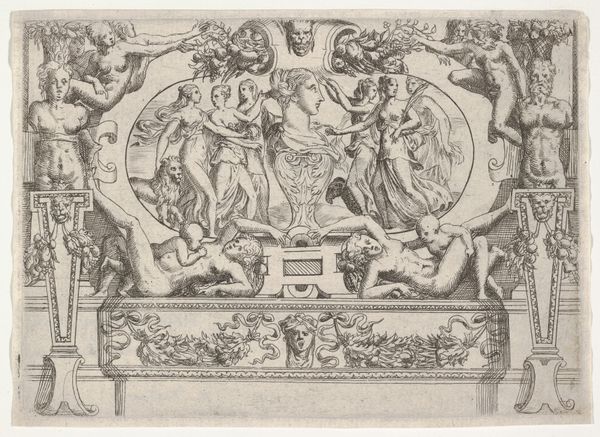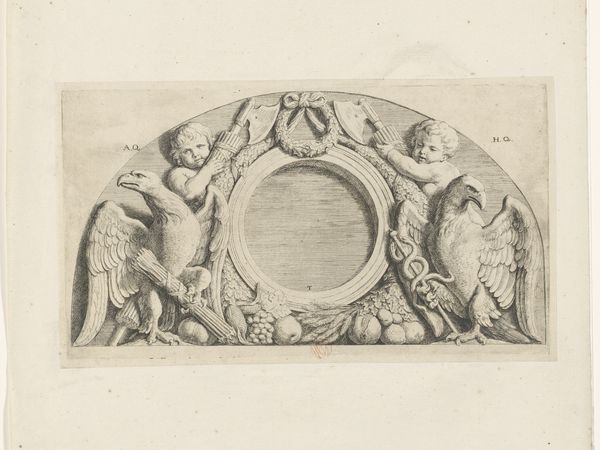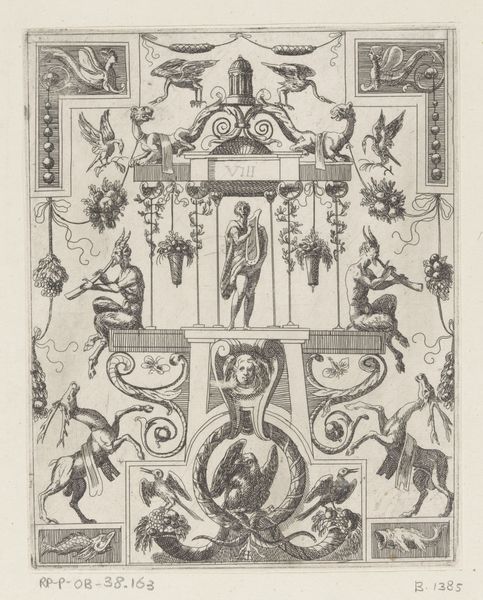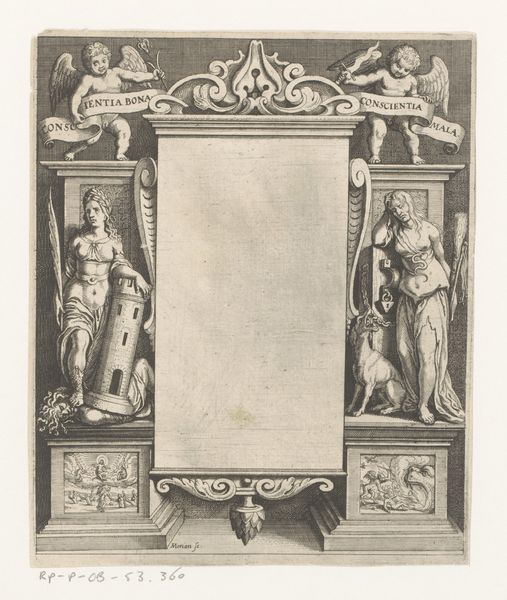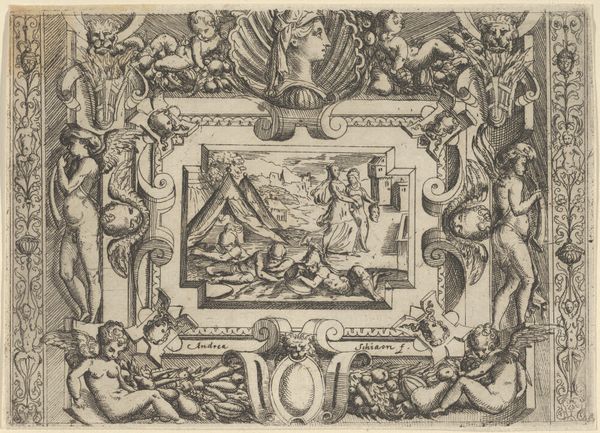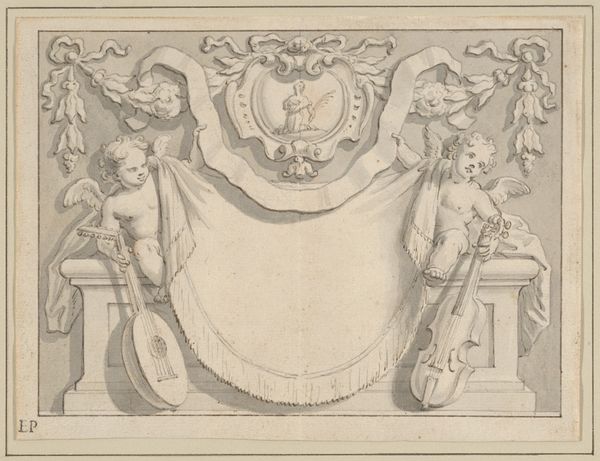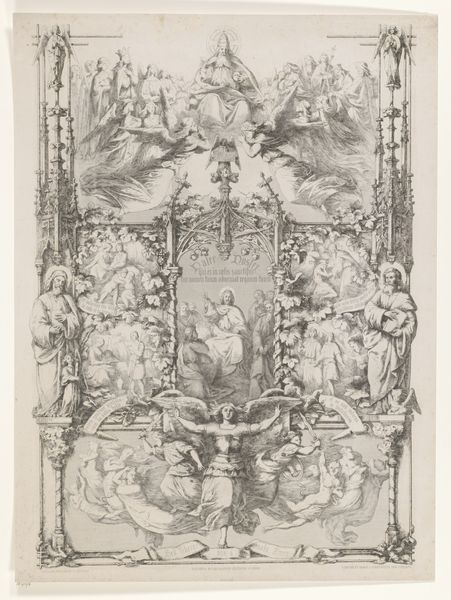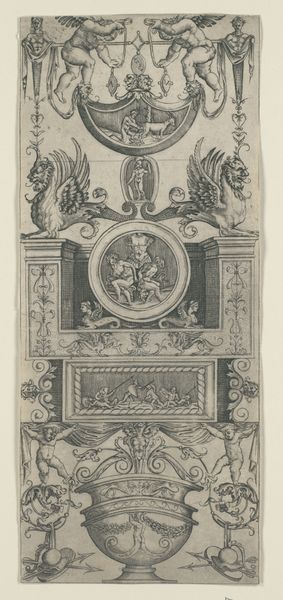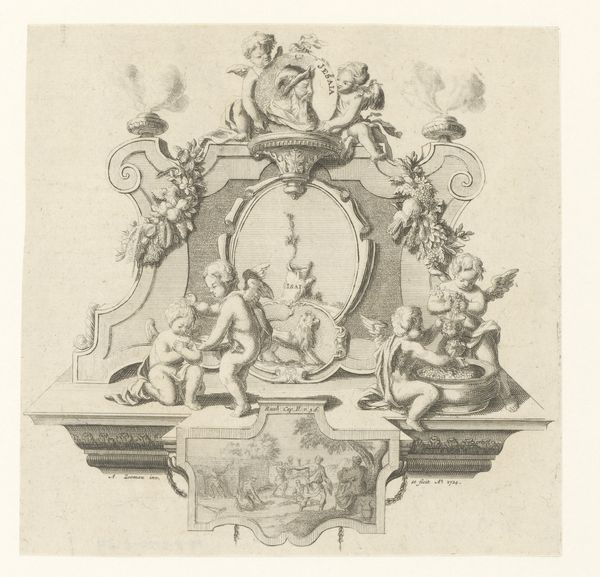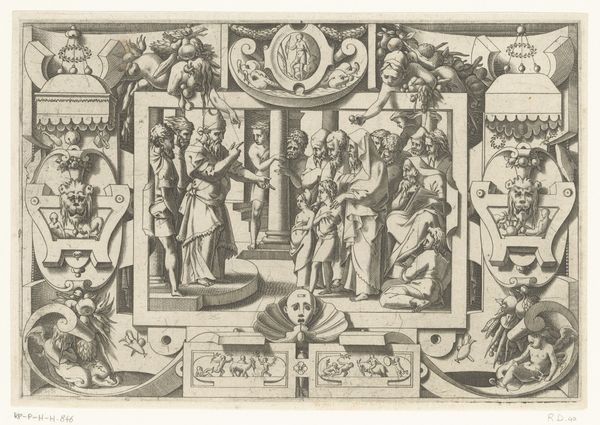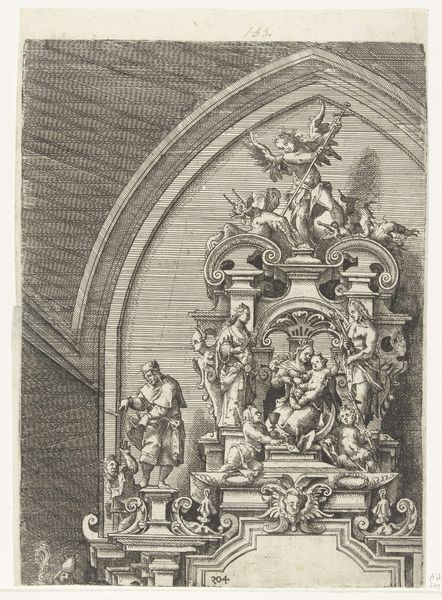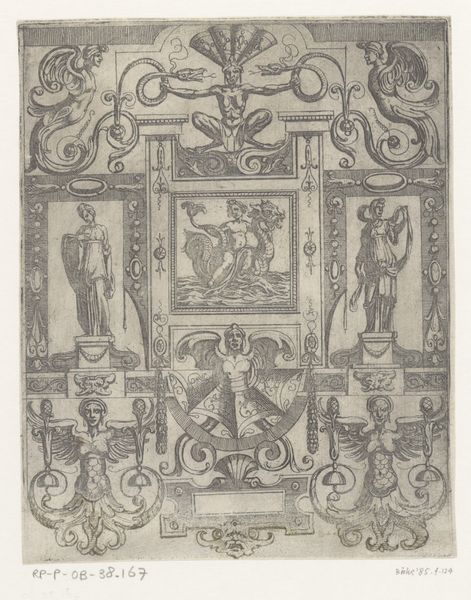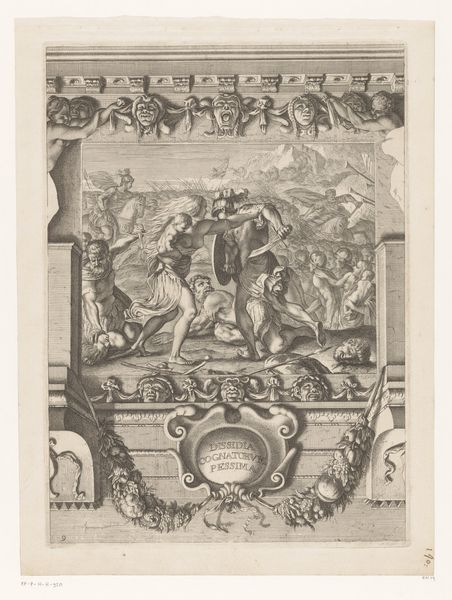
Design for a Wall Decoration over an Arched Doorway with Grimani Arms 1528 - 1590
0:00
0:00
drawing, print, ink
#
drawing
#
allegory
#
pen drawing
# print
#
mannerism
#
figuration
#
11_renaissance
#
ink
#
men
#
pen work
#
history-painting
#
decorative-art
Dimensions: 6 1/2 x 12 5/16in. (16.5 x 31.3cm)
Copyright: Public Domain
Curator: What an elaborate and dramatic composition. It's a pen and ink drawing, titled "Design for a Wall Decoration over an Arched Doorway with Grimani Arms," attributed to Bernardino India, dating roughly from 1528 to 1590. Editor: Dramatic is right. The ornate frames within frames give it a feeling of layered realities, or perhaps multiple planes of existence being juxtaposed. What immediately grabs me are the heraldic symbols – specifically, that striped oval shield front and center. Curator: Those are the Grimani arms, central to understanding its iconography. We see allegorical figures flanking the shield; each seems deliberately posed, almost theatrical in their presentation. Editor: The figure on the left, crowned and seated with a lion, speaks to strength, power, nobility... possibly even divine right. While the figure with what looks like a broken column evokes stability or resilience amidst hardship on the other side. Curator: Indeed, the figures are rendered with a clear Mannerist sensibility, prioritizing elegance and artificiality over naturalism. Observe how India uses line, creating dynamic textures but always contained, controlled. This deliberate structure mirrors the aristocratic control such families wanted to convey. Editor: The repeated lion head motifs also reinforce that association with strength and noble bearing. Given its intended location over an arched doorway, what message was it meant to impart? It is as though we, entering beneath, are moving into a space defined by this family's identity, values, and historical presence. Curator: Precisely. Consider the semiotic weight of each element: the posture of the figures, the architectural embellishments, and the placement of the arms, all point to a carefully constructed declaration of lineage, authority, and perhaps aspiration. India clearly understood how to articulate these qualities formally. Editor: Beyond heraldry, I’m wondering about broader visual language that conveys power. It presents a curated vision of how they wanted to be perceived – or how they actively shaped public perceptions of their stature. This piece helps decode an exercise in brand management, of a sort. Curator: A fine summation! India's artistry showcases the power of structure and controlled visual language in shaping meaning. Editor: It reminds us of the resonance that certain symbols accumulate—carrying weight across time.
Comments
No comments
Be the first to comment and join the conversation on the ultimate creative platform.
